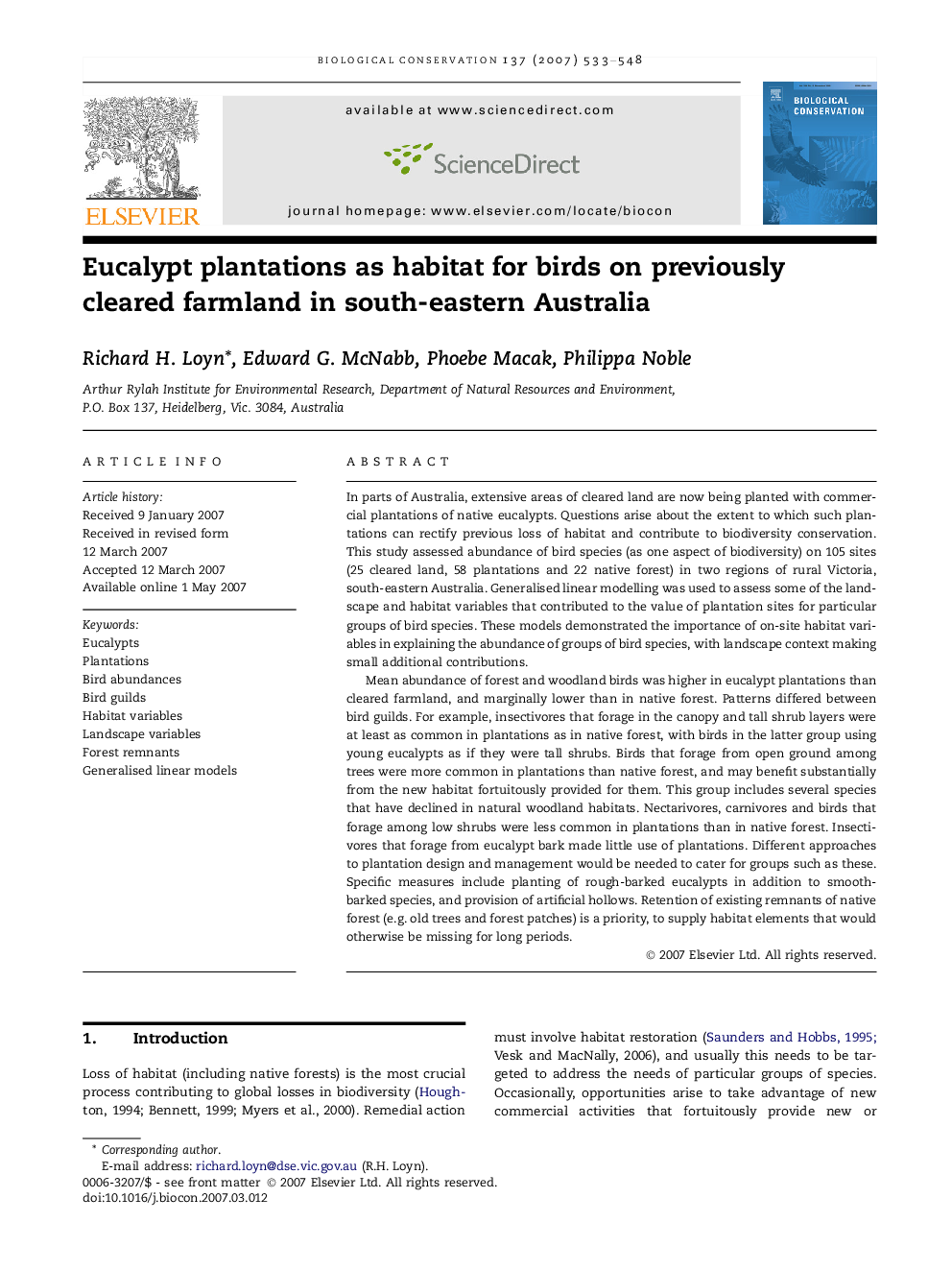| کد مقاله | کد نشریه | سال انتشار | مقاله انگلیسی | نسخه تمام متن |
|---|---|---|---|---|
| 4387079 | 1304588 | 2007 | 16 صفحه PDF | دانلود رایگان |

In parts of Australia, extensive areas of cleared land are now being planted with commercial plantations of native eucalypts. Questions arise about the extent to which such plantations can rectify previous loss of habitat and contribute to biodiversity conservation. This study assessed abundance of bird species (as one aspect of biodiversity) on 105 sites (25 cleared land, 58 plantations and 22 native forest) in two regions of rural Victoria, south-eastern Australia. Generalised linear modelling was used to assess some of the landscape and habitat variables that contributed to the value of plantation sites for particular groups of bird species. These models demonstrated the importance of on-site habitat variables in explaining the abundance of groups of bird species, with landscape context making small additional contributions.Mean abundance of forest and woodland birds was higher in eucalypt plantations than cleared farmland, and marginally lower than in native forest. Patterns differed between bird guilds. For example, insectivores that forage in the canopy and tall shrub layers were at least as common in plantations as in native forest, with birds in the latter group using young eucalypts as if they were tall shrubs. Birds that forage from open ground among trees were more common in plantations than native forest, and may benefit substantially from the new habitat fortuitously provided for them. This group includes several species that have declined in natural woodland habitats. Nectarivores, carnivores and birds that forage among low shrubs were less common in plantations than in native forest. Insectivores that forage from eucalypt bark made little use of plantations. Different approaches to plantation design and management would be needed to cater for groups such as these. Specific measures include planting of rough-barked eucalypts in addition to smooth-barked species, and provision of artificial hollows. Retention of existing remnants of native forest (e.g. old trees and forest patches) is a priority, to supply habitat elements that would otherwise be missing for long periods.
Journal: Biological Conservation - Volume 137, Issue 4, July 2007, Pages 533–548